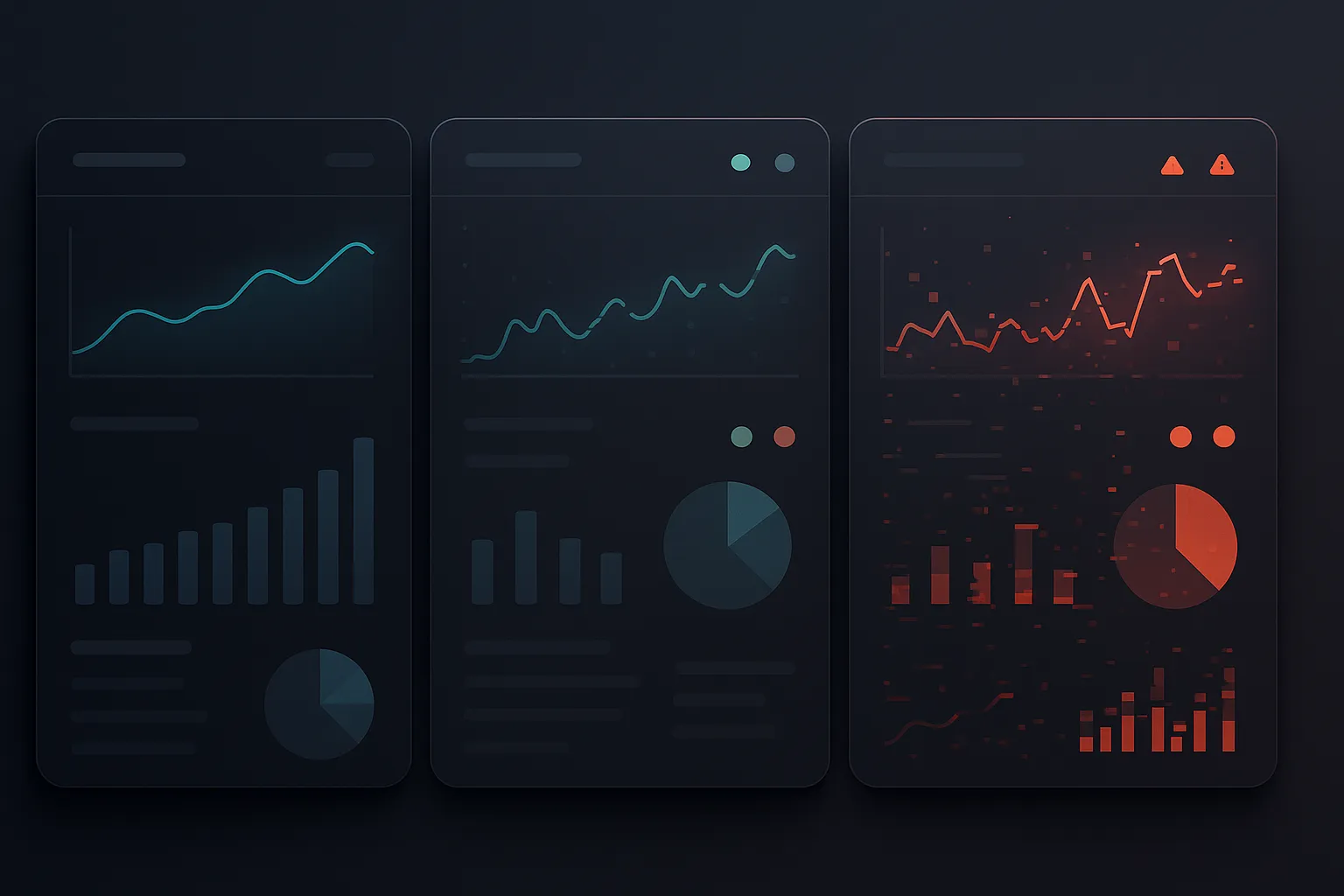You didn’t build a bad model. The world just moved on without it.
One day, everything works. Predictions land. Users are happy. Your boss says, “This thing is magic.”
A month later, tickets start piling up. Customers drop off. The model seems fine on paper, but something’s off. And the worst part? You don’t see it coming.
That’s drift.
It’s what happens when your model keeps doing what it was trained to do, but the world it was trained on isn’t the one it’s living in anymore.
What Drift Actually Means
Let’s break the jargon:
- Data Drift: The inputs have changed. You trained on apples, now you’re getting oranges.
- Concept Drift: The relationship between input and output has shifted. Same data, different meaning.
- Label Drift: The outcomes are showing up in new proportions. It used to be 80/20, now it’s 50/50.
- Model Drift: Everything still “runs,” but performance quietly erodes.
Each one attacks your model in a different way. And together, they’re how good systems go stale.
A Real Example: When the World Went Contactless
In early 2020, a fraud detection model trained on in-store transaction data started flagging everything as suspicious. Why?
Because the world had just gone contactless. Online and tap-to-pay purchases surged. The model, trained on pre-pandemic behavior, didn’t recognize the new patterns. And it started failing. Quietly, confidently, and at scale.
The result? False positives, angry customers, and millions lost to the one thing no one had accounted for: change.
Where Drift Comes From
Most teams expect bugs to be loud. Drift is subtle. It shows up as:
- Behavior changes: Users stop clicking. Customers react differently.
- External shifts: New laws, new competitors, new data sources.
- Schema changes: A logging pipeline tweaks a column. No one tells you.
- Feedback loops: Your model changes the world, which changes the data, which breaks the model.
- Malice: Spammers adapt. Fraudsters evolve. Drift isn’t always natural.
How to Spot It
Drift doesn’t always announce itself. But if you know where to look, the signs are there.
**1. Your Accuracy Drops
**Obvious, but often delayed. Especially if you don’t get labels back fast enough.
**2. Your Features Look Different
**Sometimes drift isn’t about outcomes, it’s about what the model is being fed.
- PSI (Population Stability Index) looks at how feature values shift over time. You bucket values (e.g., age ranges) and compare the distribution between training and live data. A PSI over 0.2 is a yellow flag. Over 0.5? Red alert.
- KL Divergence is a more math-heavy cousin. It compares the probability distributions of features. How much does today’s input look like yesterday’s? If the curve starts pulling apart, something’s changing.
You don’t need to be a statistician. But you do need to know when your inputs stop looking like the world you trained on.
3. Your Predictions Change
- Class balance shifts
- Confidence increases even as outcomes worsen
**4. Train a Drift Detector
**Here’s a trick: treat your data like a classification problem.
Take a sample of your training data and label it as 0. Then take a sample of your most recent live data and label it as 1. Train a simple binary classifier (like a random forest or logistic regression) to distinguish between the two.
If the model can tell them apart with high accuracy, your data distributions have meaningfully diverged. That’s drift. No fancy math needed, just a clever use of the tools you already have.
Why Drift Breaks Everything
The dangerous part isn’t the accuracy drop. It’s the false confidence.
Your system still outputs predictions. Your dashboards still look green. Your alerts don’t fire.
But users notice. Outcomes degrade. And trust starts to die quietly.
Drift doesn’t throw errors. It just makes you wrong.
In high-risk systems, that means regulatory exposure. In low-risk systems, that means attrition and churn.
Either way, you lose.
Staying Ahead of the Decay
This is where most teams shift into checklist mode.Staying ahead of drift means recognizing signals early and acting before the decay becomes damage.
Here’s what that looks like in practice:
You don’t need to predict the future. But you do need to notice when it changes.
Instrument Everything
Log the inputs. Log the outputs. Log the feedback. If you can’t see change, you can’t act on it.
Monitor for Movement
- Feature drift: PSI, KS tests
- Prediction drift: class balance, calibration
- Model performance: accuracy, recall, cost
Schedule Regular Evaluations
- Benchmark live data against holdouts
- Compare to retrained candidates
- Keep score over time
Automate Retrains (Cautiously)
- Trigger on statistical thresholds, not time
- Use shadow deployments to test before you leap
- Avoid blindly learning from the wrong data
Build for Change
- Design modular models that adapt by segment or region
- Include time or recency as a feature
- Create rules to flag when drift exceeds what you’re willing to tolerate
Keep a Human in the Loop
- Trust your team to spot the weird stuff
- Let metrics guide decisions, not make them
- Make it easy to intervene, escalate, or rollback

Without drift monitoring, you don’t notice the drop until it’s too late.
The Quiet Killer
Drift isn’t loud. It doesn’t crash your system or throw red flags. It just slowly makes your model worse, until someone notices.
The teams that thrive aren’t the ones with the best accuracy on day one. They’re the ones who adapt. Who build reflexes into their pipelines. Who treat their models like living systems: monitored, updated, and cared for.
So if your system seems like it’s slipping, don’t ask, “What went wrong?”
Ask, “What changed?”
Because the world moved.
And your model didn’t.
